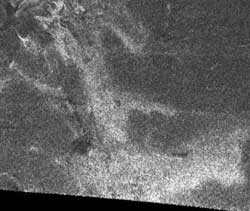This area deals with the fundamental laws and building blocks of nature and how they interact, the properties and the behavior of matter, and research into space and time and their structures.
innovations-report provides in-depth reports and articles on subjects such as astrophysics, laser technologies, nuclear, quantum, particle and solid-state physics, nanotechnologies, planetary research and findings (Mars, Venus) and developments related to the Hubble Telescope.

The word “crystal” is a technical term; iron and steel, for example, are crystals whereas glass is not. In fact, “crystal” means materials of a crystalline structure.
Just like any other kind of material, crystals can change their structure. For example, if the temperature rises sufficiently, it passes from a solid to a liquid state. But other, not so noticeable, structural changes also take place, such as those that occur in the solid state, itself. These changes are known as s

The maiden flight of a Soyuz 2-1a launch vehicle took place on Monday 8 November 2004 from the Plesetsk Cosmodrome in Russia at 21:30 Moscow time (19:30 Paris). Starsem, Arianespace and their Russian partners report that the mission was accomplished successfully.
This launch marks a major step forward in the Soyuz evolution programme as this modernised version of the launcher implements a digital control system providing additional mission flexibility and enabling control of the

Capitalizing on the incomparable optical capabilities of the Keck Telescope, scientists have gained an unprecedented look at the atmosphere of Uranus, providing new insight into some of the most enigmatic weather in the solar system.
A pair of images unveiled here today (Nov. 10) at a meeting of the Division for Planetary Sciences of the American Astronomical Society, reveal more cloud features — an abundance of atmospheric phenomena that vary dramatically in size, brightness and

Today, a group of physicists published the most compact and elegant explanation of one of nature’s simplest phenomena: the way light behaves in the sky above us. This research appears today (Tuesday, 9th November) in the New Journal of Physics, published jointly by the Institute of Physics and Deutsche Physikalische Gesellschaft (German Physical Society).
Michael Berry and Mark Dennis from the University of Bristol, in collaboration with Raymond Lee of the US Naval Academy, have

This synthetic aperture radar image of the surface of Saturn’s moon Titan was taken on 26 October 2004, when the NASA/ESA/ASI Cassini-Huygens spacecraft flew about 2500 kilometres above the surface and acquired radar data for the first time.
The radar illumination was from the south: dark regions may represent areas that are smooth, made of radar-absorbing materials, or are sloped away from the direction of illumination.
A striking bright feature stretches from up

An international team of astronomers (including the UK) has produced the first ever image of an astronomical object using high energy gamma rays, helping to solve a 100 year old mystery – an origin of cosmic rays. Their research, published in the Journal Nature on November 4th, was carried out using the High Energy Stereoscopic System (H.E.S.S.), an array of four telescopes, in Namibia, South-West Africa.
The astronomers studied the remnant of a supernova that exploded some